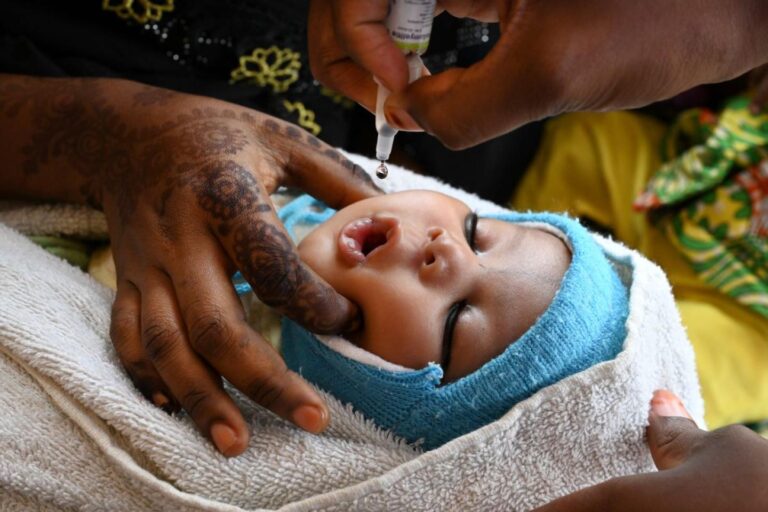
The first 1,000 days of life—from pregnancy until a child’s second birthday—are considered the most critical for physical growth and brain development. Poor nutrition during this period can result in long-term problems such as stunted growth, weak immunity, delayed learning, and, in severe cases, even death. Understanding the causes, symptoms, and preventive steps is the key to protecting our little ones.
Table of Contents
🔹 Causes of Infant Malnutrition
There is no single cause of malnutrition in infants; instead, it is often the result of multiple factors combined.
One of the most common causes is inadequate breastfeeding. Many mothers stop breastfeeding too early or do not exclusively breastfeed their babies for the first six months, which is strongly recommended by the World Health Organization (WHO). Sometimes, mothers themselves are undernourished during pregnancy or after delivery, affecting the quality of milk.
Another major reason is the late or improper introduction of complementary foods. Babies need semi-solid, mashed, and nutrient-rich foods after six months along with breast milk. But many parents delay this or replace it with processed, low-nutrient foods like biscuits or sugary drinks.
Recurrent infections also play a big role. Conditions like diarrhea, pneumonia, and respiratory infections make infants weak, reduce appetite, and prevent proper absorption of nutrients. Poverty, lack of hygiene, and low awareness among caregivers worsen the problem further.
🔹 Symptoms of Malnutrition in Infants
Recognizing malnutrition early is very important because the effects can quickly become severe. Some common warning signs include:
- Low weight for age: Babies who are much lighter than the standard weight for their age may be malnourished.
- Stunted growth: If a baby is shorter than normal for their age, it indicates long-term malnutrition.
- Visible thinness: Infants may look very skinny, with ribs or bones visible.
- Swelling in the face or legs: This can be a sign of severe acute malnutrition.
- Frequent sickness: Malnourished babies often fall ill more often due to weak immunity.
- Behavioral signs: The baby may look dull, cry often, or appear less active than other infants.
🔹 Myths vs Facts about Infant Nutrition
| Myth ❌ | Fact ✅ |
|---|---|
| “If the baby looks thin, the mother’s milk is weak.” | Mother’s milk is usually sufficient and complete for the first six months. Thinness may be due to illness or poor feeding practices. |
| “Infants need water in summer.” | Exclusively breastfed babies do not need water for the first six months. Breast milk is 88% water and keeps babies hydrated. |
| “Formula is always better than breast milk.” | Breast milk is the best food for infants. Formula should only be given if prescribed for medical reasons. |
🔹 Do’s and Don’ts for Infant Feeding
| ✅ Do’s | ❌ Don’ts |
|---|---|
| Start breastfeeding within one hour of birth. | Do not give honey, cow’s milk, or plain water before 6 months. |
| Continue exclusive breastfeeding for the first 6 months. | Avoid junk foods like biscuits or chips as “snacks” for infants. |
| Begin complementary feeding at 6 months (mashed fruits, rice, dal, etc.). | Don’t force-feed a sick baby. Instead, give light, easily digestible food. |
| Ensure complete vaccination to prevent infections. | Don’t stop breastfeeding too early unless medically advised. |
🔹 Prevention & Awareness
Preventing infant malnutrition is possible with awareness and proper care. Mothers should be educated about the importance of exclusive breastfeeding for the first six months and continuing breastfeeding up to two years along with nutritious complementary foods. Communities must promote safe hygiene practices to prevent diarrhea and infections, which are major causes of malnutrition.
Equally important is maternal health. A malnourished mother is more likely to give birth to an underweight baby. Ensuring proper antenatal care, supplements, and a balanced diet during pregnancy helps break this cycle.
🔹 Treatment
Treatment of malnutrition depends on its severity. Mild cases can often be managed at home with guidance from health workers. This includes improved breastfeeding, introduction of energy-dense complementary foods, and micronutrient supplements such as iron and vitamin A.
Severe cases may require therapeutic foods, which are special calorie-rich, ready-to-use pastes provided under government and health programs. Infants with complications may need hospitalization, where they receive nutritional rehabilitation and medical treatment for infections.
Equally important is counseling for parents so they can continue proper feeding at home even after treatment.
🔹Case Study
👉 In 2022, a rural district in Maharashtra reported rising cases of infant malnutrition. Surveys revealed that many mothers were feeding biscuits and tea to babies under one year, believing it was “light food.” Health workers intervened by conducting village workshops and spreading awareness about exclusive breastfeeding and complementary feeding. Within one year, the number of malnourished infants dropped by 40%, proving that awareness and community involvement are powerful tools against malnutrition.
🔹 FAQs
Q1. Can cow’s milk be given to a 3-month-old baby?
No. Babies under six months should be exclusively breastfed. Cow’s milk can harm the infant’s digestion and kidneys at this age.
Q2. When should solid foods be introduced?
At six months, soft, mashed foods such as banana, dal, or rice should be introduced along with breastfeeding.
Q3. My baby looks thin. Does it mean I don’t have enough milk?
Not necessarily. A doctor’s checkup is needed. Most often, mother’s milk is sufficient, and the issue may be related to infections or feeding frequency.
Q4. How do I know if my baby is underweight?
Regular growth monitoring at health centers using WHO growth charts is the best way.
Q5. What foods are best for the first feeding?
Mashed banana, rice, potato, dal, or soft vegetables are ideal first complementary foods.
🔹 Conclusion
Infant malnutrition is a silent but serious threat. However, it is largely preventable and treatable with the right care, awareness, and community involvement. Every child deserves a healthy start in life, and by promoting exclusive breastfeeding, timely complementary feeding, maternal health, and regular checkups, we can ensure that no baby suffers due to lack of nutrition.
